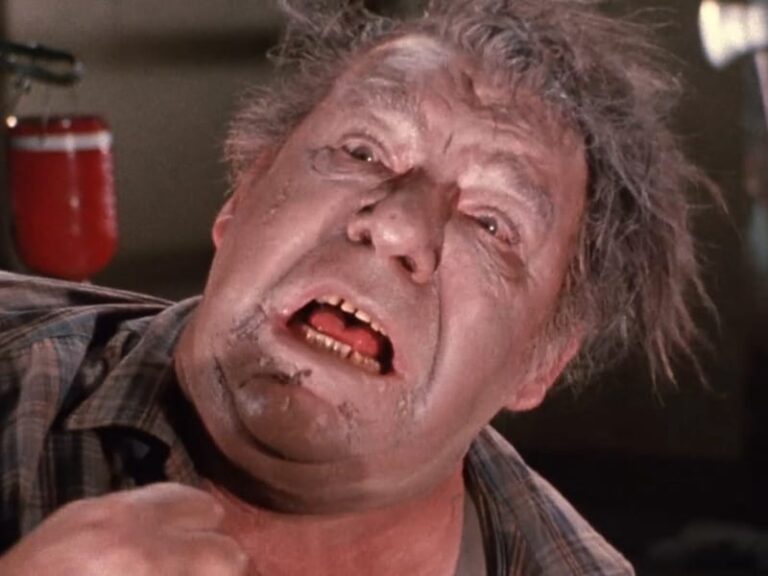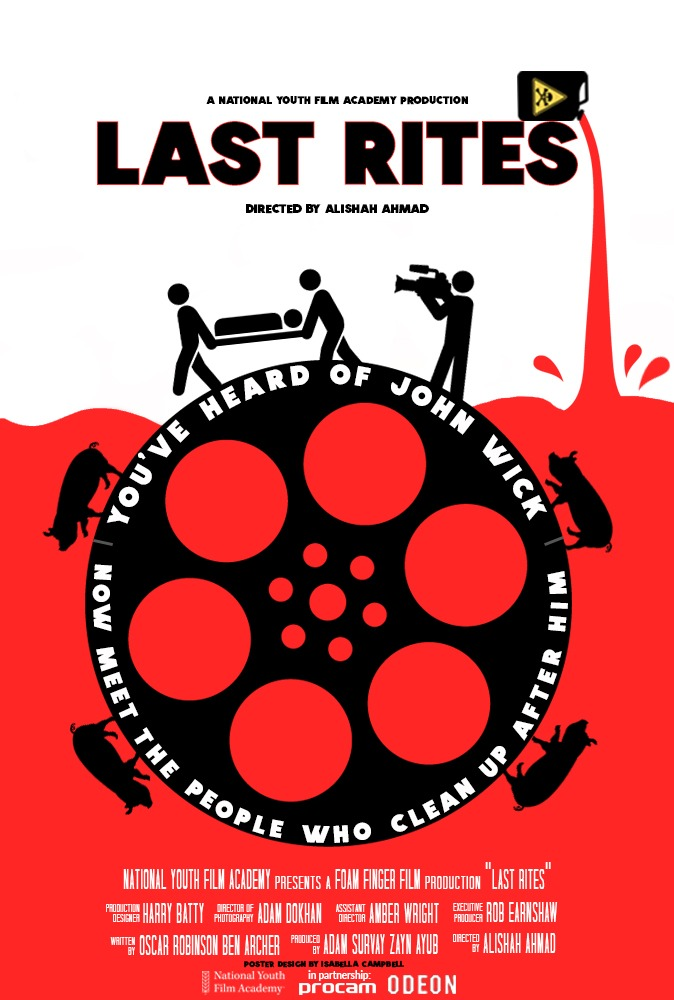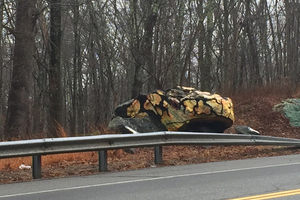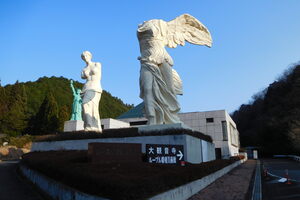How to Play a Fiery Victorian Christmas Game and Not Get Burned
This month, Gastro Obscura is sharing the recipes and stories behind amazing holiday dishes and drinks from around the world in the ongoing series “Home-Cooked Holidays.”
In the 19th century, Christmas looked a little different. For holiday fun, revelers in the United States and England scared their friends with ghost stories, told fortunes, and played boisterous party games. One such game, snapdragon, is rarely part of anyone’s Christmas these days. After all, it involves pulling sweets from a puddle of flames.
The game is simple. Take a wide, flat plate, and cover it with raisins and almonds. Carry the plate into a dark room, and douse the fruit and nuts with brandy. Then, ignite the brandy. Plunge your hands into the ghostly blue flames, and eat as many of the boozy snacks as you can without getting burned.
These days, at Christmas, the fire tends to stay in the fireplace, the brandy stays in the eggnog, and everyone stays far away from flaming party games. From a modern perspective, they sound downright terrifying. In fact, Atlas Obscura explored the tradition of snapdragon in a 2016 article entitled “Victorians’ Christmas Parlor Games Will Leave You Burned, Bruised, and Puking.” But was snapdragon really all that dangerous? To answer this question, I wrangled a few members of the Gastro Obscura staff to play the game over Zoom, because nothing says workplace culture like burning yourself with some flaming alcohol, together. But before I embarked on this experiment, I wanted to know what we were getting into.
Many writers, up to the early 20th century, considered snapdragon a wholesome way to pass the time on a cold winter’s evening. One writer, in 1860, even lamented that the tradition of playing snapdragon was losing ground to the newfangled “Christmas-tree.” The game’s blue flames seem to align with the creepier old-school Christmas traditions of ghost stories and fortune-telling. Half the fun, wrote the 18th-century journalist Richard Steele, was to see your opponent “look like a demon as we burnt ourselves and snatched at the fruit.”
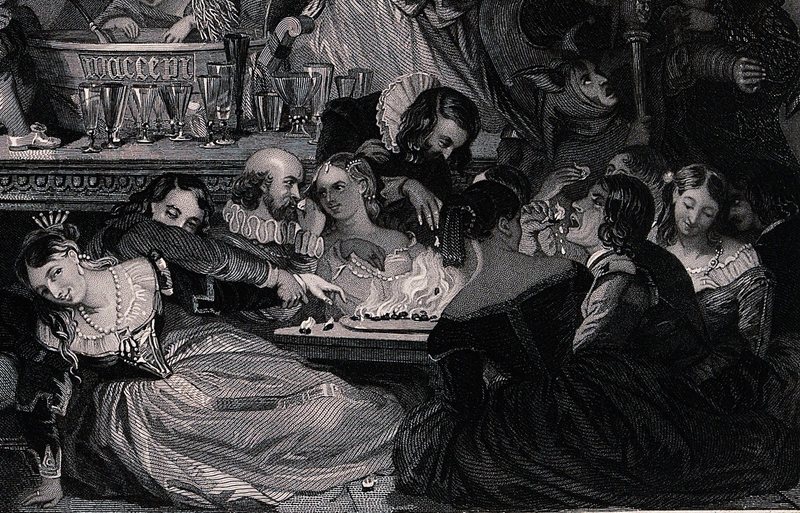
While its origins are a mystery, we do know that snapdragon was played in Elizabethan England. Shakespeare mentioned a similar game in his plays, with characters referring to it as “flap-dragon.” References to snapdragon appeared in later literary works as well, by writers ranging from Charles Dickens to Lewis Caroll. Samuel Johnson, in his groundbreaking English dictionary first published in 1755, wrote that, when it came to snapdragon’s fire-engulfed raisins, the quick could put them “blazing into the mouth,” but “those unused to the sport may be afraid to take [them] out.”
So, with the knowledge that even the objectively tougher people of the 18th century could be afraid of playing snapdragon, our team put it to the test. After we lit our piles of raisins and almonds with everything from applejack brandy to rum in our dark kitchens, the blue flames were just as eerie as described.
True, all of us hesitated before putting our hands into the fire. As the writer of this piece, I took it upon myself to snatch out the first almond. “It’s fine, no pain!” I shouted, showing off the burning nut before popping it in my mouth.
Soon, we were all grabbing at the raisins and almonds fearlessly. While brief bursts of heat did make us occasionally snatch our hands away, the sting faded quickly, and no one got burned. Some early accounts of snapdragon recommended throwing salt on the flames, without any explanation of what it would do. As it happens, pinches of salt tossed on the fire makes the flames pop and flare brilliant gold, for just a second.
While we started the game nervous about dipping our hands into literal fire, it soon became clear that snapdragon is really, really fun. So why does no one play it anymore?
There could be any number of reasons, from people becoming wary of open flames in the home, to increasingly protective parents. But it may not be as dangerous as it seems. Several days after making my coworkers risk their fingers and eyebrows by playing snapdragon, I reached out for an expert opinion.
“Make sure you have a blue flame,” says Dr. Jack Cohen. Cohen, now retired, has spent most of his life studying fire, as a U.S. Forest Service fire scientist. The blue flame that makes snapdragon looks so cool, he says, is the result of chemiluminescence, not thermal radiation. Chemiluminescence produces light, but not much heat. If you were to compare snapdragon’s blue flame to a yellow candle flame, he says, the candle is burning twice as hot. After all, brandy is often only around 50 percent alcohol, meaning it won’t burn as hot as something higher-proof.
As for why it’s possible to snatch raisins from the plate without getting seriously burned, that’s simple, he says: Raisins and almonds don’t conduct heat all that well, and cool off very quickly. Flinging pinches of salt into the flames, making them sputter and turn yellow, shows how the sodium atoms are absorbing energy in the fire, then losing it, creating a splash of yellow light.
So, does Cohen think that playing snapdragon is dangerous? Not really. But, to be fair, he likes fire more than most people. “I really can’t determine a time when I wasn’t playing with fire,” he remarks, fondly reminiscing when he used to siphon gasoline from the family lawnmower to set it alight, which is very funny to hear from one of the people who helped develop the National Fire Danger Rating System.
In the end, snapdragon offers light, warmth, and fun just as much as it offers the thrill of peril. “Basically, what it’s doing is it’s daring you,” Cohen muses. Only those able to get past their entirely reasonable fear of fire can gain the treats inside the flames.
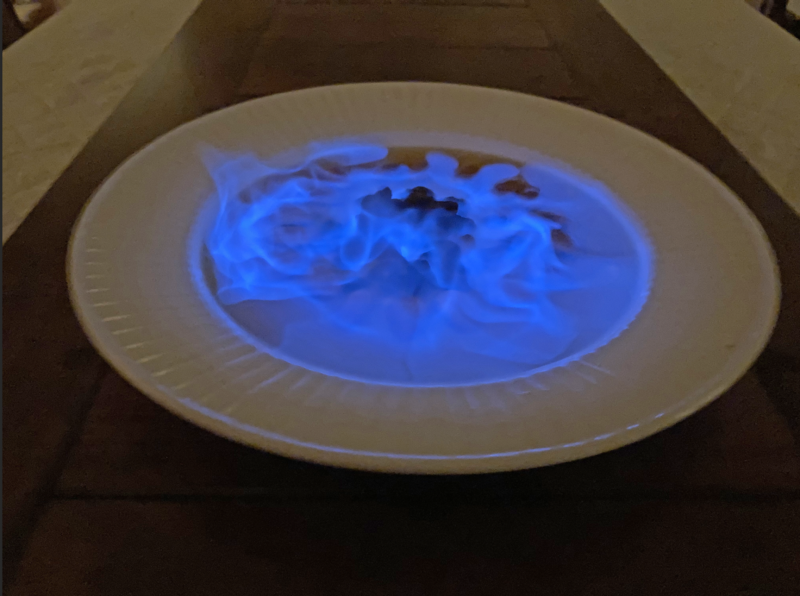
Snapdragon
While we cannot recommend anyone play with fire in their own home, here’s how the Gastro Obscura team played snapdragon.
½ cup raisins
½ cup almonds
¾ cup, plus ¼ cup of around 50 percent alcohol, such as brandy or rum
Salt
1. Take a large, flat plate, and sprinkle the raisins and almonds on top, making sure to space them out.
2. Pick where you’ll play the game. A dim-to-dark room or outside at night is best for seeing the blue flames. Make sure wherever you set the plate is free of any tablecloth or flammable materials.
3. Pour the ¾ cup of alcohol onto the plate. Add more if the bottom of the plate is not thoroughly covered. Then, heat the other ¼ cup in a pot on the stove until it sizzles and steams. (Cohen says this volatilizes the alcohol, increasing the amount of vapor and making it easier to set alight.) Carefully pour the hot liquor into a mug or a bowl, making sure not to burn yourself.
4. Gather a large spoon, matches or a lighter, the mug, and the salt. When ready to start playing, pour the liquor into the large spoon and set it alight. Then, carefully tip the flaming liquor onto the plate, letting it light the rest of the alcohol. It may not take right away. Reheat more alcohol and try again if it doesn’t work the first time.
5. Once the blue flames are leaping, players can reach for the raisins and almonds. Pinches of salt will make the fire briefly burn yellow and flare. Take care, since the plate will gradually heat up. To refresh the flames, carefully stir the mix with the spoon, or add more alcohol. Eat what you pull from the fire.

